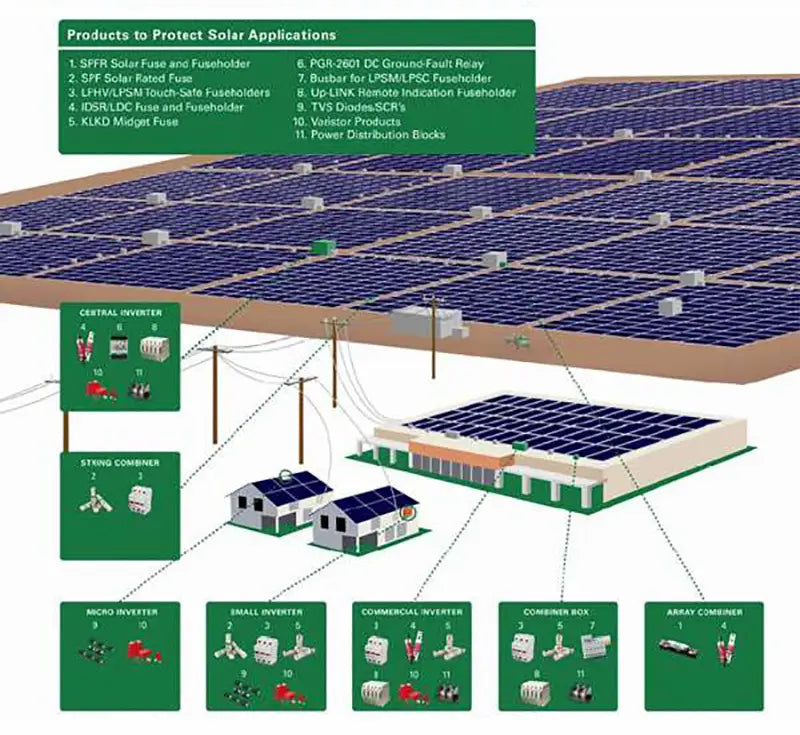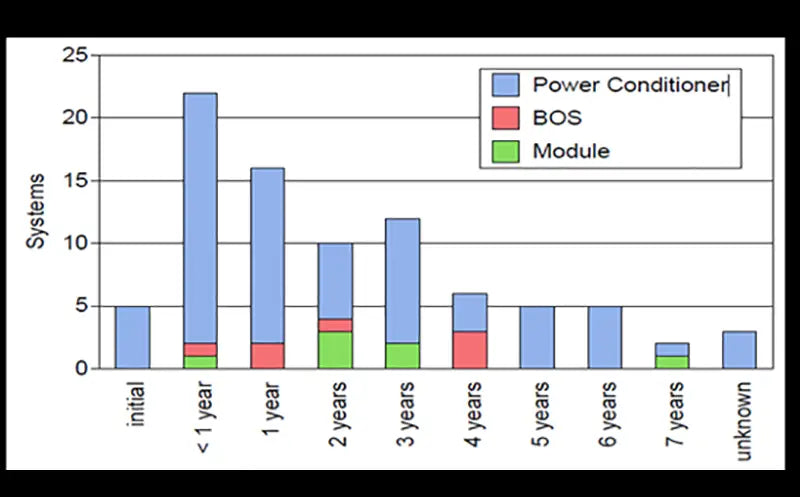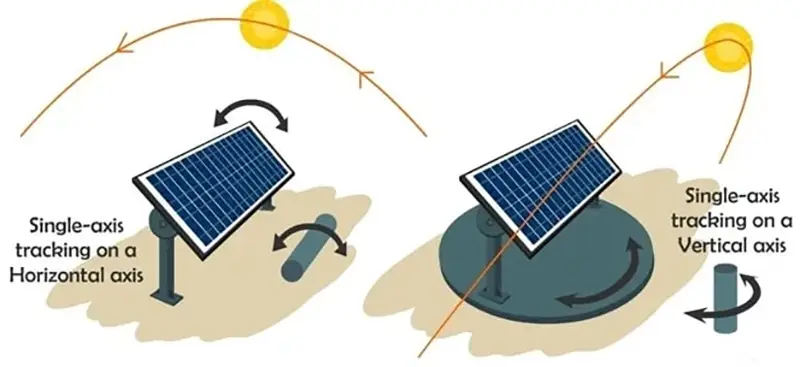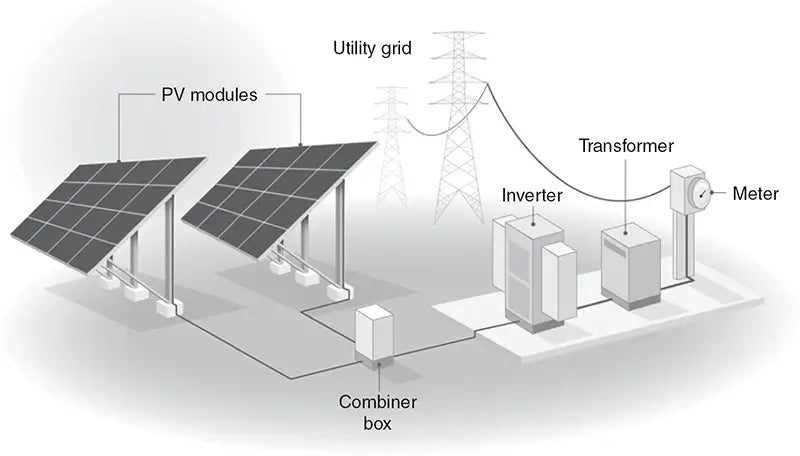
Main content:
- Requirements for photovoltaic power generation control and protection
- Stability criterion of photovoltaic power generation system
- Failure forms of photovoltaic power generation
- Three-phase short-circuit fault of the transmission line of the photovoltaic power generation system
- Recommendations and Conclusions
After analyzing the impact on the transient stability of Qinghai power grid after the planning of photovoltaic power generation access system in 2010, the following types of faults are mainly considered: three-phase short-circuit fault occurs in the main 330kV line in Qinghai photovoltaic power generation network; large unit trips; photovoltaic power station due to failure Suddenly quit running.
1. Requirements for photovoltaic power generation control and protection
According to the "Technical Regulations of the State Grid Corporation for the Connection of Photovoltaic Power Stations to the Power Grid", after photovoltaic power generation is connected to the power grid, the voltage deviation of the public connection point should meet the provisions of GB/T12325-2008 "Power Quality Supply Voltage Deviation".
According to the "Technical Regulations of the State Grid Corporation for the Connection of Photovoltaic Power Stations to the Power Grid", large and medium-sized photovoltaic power stations should have a certain ability to withstand abnormal voltages, so as to avoid the loss of power grid power caused by disconnection when the grid voltage is abnormal. capacity, the output of the photovoltaic power station acts according to the principles of over-current protection and low-voltage protection. Among them, the over-current protection means that the inverter current exceeds 150% of the rated current, and the instantaneous cut-off; the low-voltage protection means that the photovoltaic power generation access point voltage is lower than 85% of the rated voltage, and the cut-off occurs when the time exceeds 0.2s.

2. Stability criterion of photovoltaic power generation system
(1) The power angle of photovoltaic power generation is stable: After the photovoltaic power generation system is greatly disturbed, the maximum relative power angle between the generators is less than 180°, and the relative power angle is a damping oscillation, and the oscillation gradually decays and disappears.
(2) The photovoltaic power generation voltage is stable: After the photovoltaic power generation system is subjected to large disturbances or down disturbances, the voltage at the central point of the photovoltaic power generation system shall not be lower than 80% Un, and the duration shall not exceed 1s, and the voltage is a damping oscillation, and the oscillation is gradually attenuated. The disappearance rate is stable: when the photovoltaic power generation system has a low frequency, it should not cause the low frequency load shedding device to operate under normal circumstances. In the event of an accident, the low frequency load device can be considered to operate, but the photovoltaic power generation system cannot have frequency collapse, that is, the minimum frequency of the system does not occur. It should be lower than the minimum frequency value of the low-frequency load reducing device; when the photovoltaic power generation system has a high frequency, the maximum rate should not be higher than the minimum frequency setting value of the high-frequency protection of the generator set in the power grid, generally not higher than 50.5-51Hz.
3. Failure forms of photovoltaic power generation
When studying transient stability, the following fault types are mainly considered:
(1) Before and after the planned connection of photovoltaic power generation, the three-phase short-circuit fault of the 330kV line. Calculate the stability of the system after normal protection and fast protection respectively. Common protection is 0.1s resection at the proximal end of the short-circuit point, 1s resection at the distal end, and quick protection is 0.1s resection at both the far and near ends.
(2) Before and after the planned connection of photovoltaic power generation, the large units in the network trip.
(3) A photovoltaic power station suddenly withdraws from operation. It is assumed that a three-phase short-circuit fault occurs in the 110kV line sent by the photovoltaic power station and is cut off after 0.2s.

4. Three-phase short-circuit fault of the transmission line of the photovoltaic power generation system
The system stability of each 330kV line in Qinghai grid when three-phase short-circuit fault occurs before and after the connection of five photovoltaic power stations in Haixi is analyzed.
(1) Regardless of whether the planned photovoltaic power station is full or not, after the three-phase short-circuit fault of the 330kV Ulan-Bain line occurs and ordinary protection is adopted, the voltage of each node of Qinghai Power Grid and the power angle of the unit can be restored to stability after the fault is cleared; the photovoltaic power station When the power is full, in the event of a fault, the photovoltaic power plants are out of operation due to their own overcurrent protection actions. Among them, the Chaka, Delinghaxikou and Gahainan photovoltaic power plants are out of operation in 0.2s, and the Golmundan and Hedong Farm photovoltaic power plants are out of operation in 0.3s. If the fast protection after the fault is adopted, the photovoltaic power generation will still be cut off due to the overcurrent protection action, and the Qinghai photovoltaic power generation grid can maintain stable operation.
(2) 33ok V Golmud-Salt Lake line. It can be seen that no matter whether the planned photovoltaic circuit breaks out or not, after the three-phase short-circuit fault of the 330kV Ulan-Bayin line occurs and ordinary protection is adopted, the power angle of the Haixi Power Grid Nagolmud gas-fired power plant unit and the salt lake comprehensive utilization unit is equal to the equivalent unit. When the swing angle exceeds 180 degrees, the power angle of the unit is unstable, the voltage swing of each node of the Haixi Power Grid is large and cannot be restored, and the voltage of the photovoltaic power generation system is unstable; The over-current protection actions are respectively out of operation, and the time is about 0.2s.
Regardless of whether the photovoltaic power station fault breaks out or not, after the three-phase short-circuit fault of the 330kV Ulan-Bayin line occurs and fast protection is adopted, the voltage of each node of the Haixi power grid and the power angle of the unit can be restored to stability. In addition, when the photovoltaic power station is at full capacity, in the event of a fault, the Gahainan photovoltaic power station and the Chaka photovoltaic power station can resist external risks and maintain grid connection. Other photovoltaic power stations are out of operation due to overcurrent protection.

(3) The unit trips. Regardless of whether the photovoltaic power station is full or not, the grid can resume stable operation after a trip failure of a 700MW unit in La Siva, and the trip of the unit has little impact on the photovoltaic power station, and the photovoltaic power generation can maintain stable grid-connected operation.
(4) The photovoltaic power station was removed due to failure. After the 100MW photovoltaic power station suddenly exits operation in 0.3s, the voltage of each node of the system can be restored to stability after the amplitude reduction oscillation, and the stabilized voltage value is slightly higher than the voltage value before exit. The exit of the photovoltaic power station has little effect on the power angle of the unit. , the power angle of each unit changes little and quickly returns to stability. Similarly, when several other photovoltaic power stations are removed due to faults, they will not affect the stable operation of Qinghai photovoltaic power grid.
5. Recommendations and Conclusions
After analyzing the impact of photovoltaic power generation on the transient stability of the power grid, the main conclusions are as follows:
(1) When a three-phase short-circuit fault occurs at 330kV in the network, different fault locations have different effects on photovoltaic power generation. If the ordinary protection is adopted, the photovoltaic power station will be cut off due to its own protection action after the fault. If the fast protection is adopted, some photovoltaic power stations can avoid the fault and maintain the well network operation. When most of the 330kV lines in Qinghai Power Grid have a three-phase short-circuit fault, the Gahainan, Delinghaxikou and Chaka photovoltaic power plants will be out of operation due to protection actions, while the Hedong Farm and Golmud South Exit photovoltaic power plants will operate stably. It has been verified by calculation that even if all photovoltaic power plants are out of operation in the event of a fault, it will not have a substantial impact on the system frequency, transmission line power and node voltage.
(2) If the planned photovoltaic power generation has low voltage ride-through capability, no matter whether the ordinary protection or fast protection is adopted after the line fault, the photovoltaic power generation can maintain the grid-connected operation during the fault period, and restore the output after the fault, which will be more conducive to Safe and stable operation of the system.
(3) When a three-phase short-circuit fault occurs on a 330kV line, no matter whether the planned photovoltaic power station is full or not, there is no substantial change in the stability of the Qinghai photovoltaic power grid. It can be seen that the connection of the 200MW photovoltaic power station in 2010 will not affect the transient state of Qinghai power grid. stability.
(4) When a large unit in Qinghai grid trips, no matter whether the photovoltaic power station is full or not, the power angle and voltage of the grid unit can be restored to stability, and the photovoltaic power generation can maintain stable grid-connected operation.
(5) After any photovoltaic power station in the planned photovoltaic power generation is out of operation for some reason, it will not affect the stable operation of the power grid.
The influence of power quality after the connection of photovoltaic power generation is analyzed, including voltage deviation, voltage fluctuation, and harmonic analysis, and the following conclusions are drawn:
(1) After using a suitable reactive power compensation device, the voltage deviation caused by the operation of the photovoltaic power generation well network must meet the requirements of the national standard.
(2) Most of the voltage changes caused by photovoltaic power stations meet the requirements of the national standard. Connecting to photovoltaic power generation will cause voltage changes to exceed the standard allowable value. It is necessary to consider adopting reactive power compensation devices with smaller compensation.
(3) When inverters are used, the harmonic current injection generated by each photovoltaic power station at the public connection point meets the requirements of international standards. When type 2 inverters are used, certain harmonic currents will exceed the limit specified in the standard.

(4) The use of inverters, the combined operation of photovoltaic power generation and the grid-connected operation at various points contains the 2nd and 7th harmonic voltages that exceed the requirements of international standards. Filter devices need to be installed in the photovoltaic power station.
(5) Since the harmonic calculation results are closely related to the inverter parameters and the operation mode of the power grid, the calculation results based on typical parameters are given here. Accurately assess the impact on the power quality of the grid and determine the need for filtering.
Read more: Grid-connected photovoltaic power station access system analysis
















